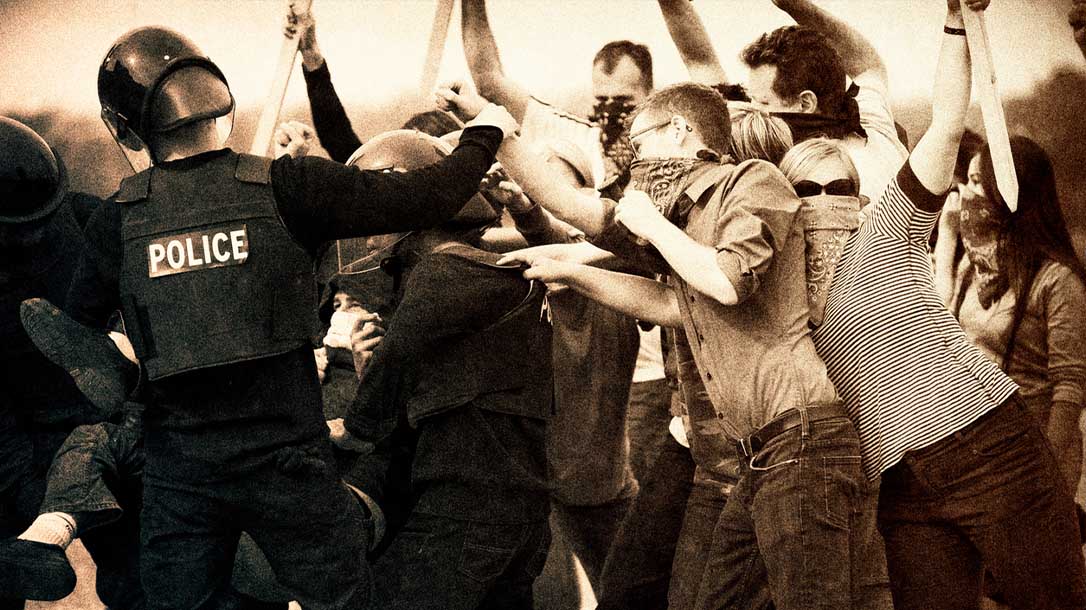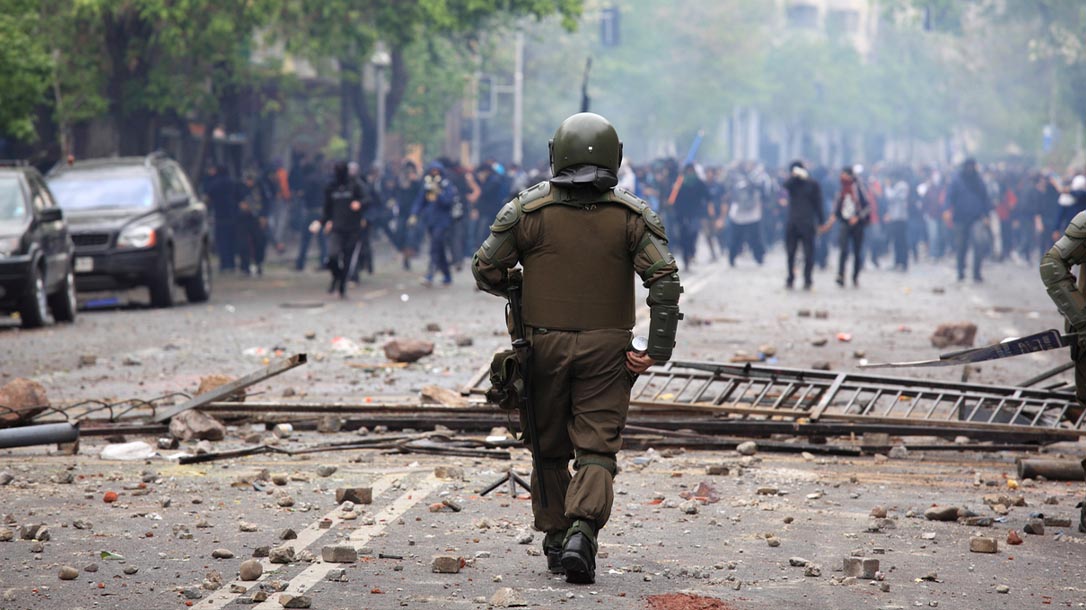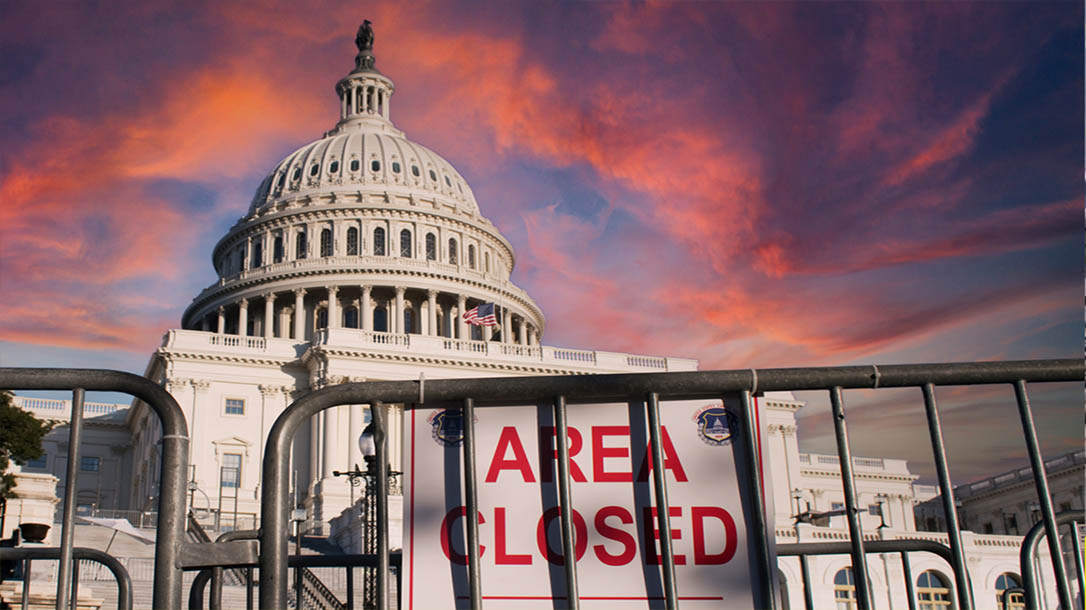People are taking sides, and it’s not pretty. Differing opinions used to lead to lively discussions and a healthy exchange of ideas. Now, a different point of view is apt to get you punched in the mouth. Surviving a riot will now be your primary objective to get home safely. Multiply this low flash point by hundreds of highly emotional, adrenaline-charged, aggressive people. Surviving a riot will now be your primary objective to get home safely.
You don’t want to be in the middle of it. When violence suddenly erupts, don’t get caught in the destructive chaos of all the burning, looting, and beatings. There are things you can do to keep your demise from being the subject of the next viral video. But you have to act quickly.
Keys to Surviving a Riot
Some may ask, “What were you doing there in the first place?” These days, I try to avoid being a target. I don’t have political bumper stickers on my car. I don’t wear my point of view on my hat or my T-shirt. Most of all, I avoid crowds of people gathering with the intent to make a statement.
But it’s not so simple. Maybe you refuse to be bullied. You want to stand up and be counted for your strong beliefs. You want to support a cause, say law and order. But remember, there is no law or order amid an all-out riot.
Maybe you’re there because it’s your job—you’re a firefighter or an ambulance crew member. Maybe your business, your very livelihood, is in the war zone. Or perhaps it’s a matter of being in the wrong place at the wrong time. You turn a corner, and you’re caught in the path of destruction with no obvious avenues of escape.
The Warning Signs
Violence is contagious, and it spreads rapidly. Police officers are expected to endure the profanities and being spit on. They are instructed not to get baited into engaging in debates or arguments with in-your-face, shouting protesters. This a good policy. But often, protesters are angered by not getting a reaction, which will escalate the situation. They become emboldened by tolerance of their disorderly behavior.
The warning signs that things are about to get ugly are apparent. When the crowd starts pushing against police lines and barricades, it’s time for you to back away. Eventually, bricks, rocks, bottles of urine, and other objects are hurled from the crowd toward the police; you need to be somewhere else. When counter-protesters begin to mix in, scuffles break out within the crowd, the first windows are broken, and the first fires are lit, you have only a short time to get to safety.
Caught In The Middle
Many of us have been taught to go to the police when we need help. That doesn’t apply when a riot is imminent. When police are finally given the order to quell a riot, the worst place to be is between the police and the rioters. The police will be moving in one direction: toward trouble. They won’t be able to sort out who is on whose side. Their goal is to disperse the crowd. Those arrested will be absorbed behind the front lines to be handcuffed and transported. Pepper spray, tear gas, and rubber bullets are all intentionally unpleasant.
When you eventually realize you’re over your head, it might be too late—you may have passed the point of no return. You might have to fight for your life. Avoid the temptation to be a spectator or to be part of the big news story. Forget about bragging, “Dude, I was there,” on social media the next day. Put your phone away and get out before people start getting beaten or trampled by the mob.

Living Through It
So, how can you increase your odds of surviving a riot?
Stay on the move. Don’t stand and fight if you get shoved or someone takes a swing at you. That only invites the pack to move in for the kill. That’s not to say that you shouldn’t defend yourself. But fight with the idea of separating yourself from the conflict. Hit to break free and move away fast. You don’t want to get swarmed by a mob where weapons or martial arts skills will do you little good.
Don’t die for your possessions. Early on, if you’re in your car and you see a path to safety, take it. Don’t worry about traffic signs or jumping curbs. Once a mob swarms you, it’s probably too late. You’ll likely have your windows smashed and be pulled from your car. Before that happens, accept that you might have to leave your vehicle and whatever’s in it behind and get to safety on foot before the mob reaches you.
Leave the crowds behind. Keep working your way to the fringes, where the crowds are thinner until you’re eventually clear of danger. Don’t worry if you must head in a direction other than where you originally intended to travel.
Make use of cover whenever possible. As you move to safety, weave in and out of places of cover—solid obstacles to objects being hurled or, worse yet, bullets flying should someone open fire into the crowd.
Find a shield. A garbage can lid, a piece of plywood ripped from a boarded-up business, or a protester’s discarded sign can deflect objects being thrown.
Stay on your feet. You don’t want to get trampled or beaten. If you do get knocked down, kick with a fury at your attackers, protect your head as best you can, and fight for your life to get back to your feet.
Find a rear exit. If you must take shelter momentarily in a ransacked business, look for a back door, possibly through a stock room. They often lead to a quieter street or alley away from the mayhem. Know, however, that this is risky. You don’t want to be trapped in a room set ablaze or swarmed by looters looking for free television sets or new pairs of sneakers.
Know your general location. The middle of a riot is not the place to launch the map app on your phone. Whenever I’m in an unfamiliar area, I first look at a map to get the lay of the land before the possibility of trouble arises. I don’t memorize every street name, but I like to know what I can expect if I have to escape in any given direction. If I head west, for instance, will there be a business district, a residential section, or an expansive park? Or will my escape be cut off by a river or high fences along an interstate highway?
Maintain a car kit. A bulletproof daypack that can be converted to a vest with front and back ballistic panels is a good investment (Leatherback Gear is a reliable source). Something as simple as a bike helmet can provide some protection from blows to the head should you abandon your vehicle and run for it through barrages of flying debris. Pepper spray, a stun gun, and minor impact weapons can help to ward off attackers as you flee to safety. A pocket-sized flashlight and a water bottle that you can attach to your belt (keeping your hands free) are good ideas, too. You might need to squirt water into your eyes to clear them of pepper spray or tear gas. Pepper spray will eventually dissipate. Tear gas (CS gas) will stay on your clothes and irritate you.
Understand the law, especially regarding the use of force. I carry a firearm for defense whenever possible. But the trouble with carrying a gun during a riot is that rioters will likely overtake you before you can legally use deadly physical force. If you defend your home or business, do it by positioning yourself inside, but always with an escape route. Don’t stand outside and brandish your weapons.
Avoid wearing clothing that screams “enemy” to the opposition. Save the shirts and hats with political slogans and other affiliations for your backyard barbecues with your friends. Choose clothing that covers you: a long-sleeve shirt or jacket, long pants, and shoes you can run in with soles thick enough to withstand some broken glass. Wear a hat.
Stay in the know. Follow the news, such as it is. Find out where and when protests are planned and choose alternate routes. Avoidance is a good strategy. Remove valuables from your place of business if they are on the projected path.
Don’t Expect Justice
Many recent riots have stemmed from protests demanding social justice. That’s ironic, considering you’re unlikely to receive justice after a riot. The right to assemble and to protest is an important one. But there’s no right to block roads, become disorderly, damage, burn or loot property, or harm anyone. That fact is lost on many in positions of authority.
If you’re attacked during a riot or your business is destroyed, odds are that those responsible will never be arrested. And if you defend yourself, you’ll probably be arrested. Your attackers will be depicted as innocent victims. Those who destroy property or assault police officers, when they are arrested, often have the charges dropped by left-leaning prosecutors.

It Will Get Worse
I wish I could close out this article with a note of optimism. Unfortunately, I believe that things will get worse before they get better. Criminal behavior is never diminished if there are no real punishments. Rioters and anarchists who face little or no consequences for their lawless actions are merely emboldened until they are getting away with murder. Sadly, that means a greater use of force will be necessary if we ever decide as a society to stop the senseless destruction.
There’s been a continual push by liberal politicians and the media to demonize and defund law enforcement and to prevent officers from taking appropriate actions to maintain order. Citizens are being slapped in the face with the reality that they are and always have been primarily responsible for their safety and security. The bottom line is that it’s up to you. Vigilance and avoidance are essential. Preparedness is crucial.



Didn’t find what you were looking for?
Read the full article here




